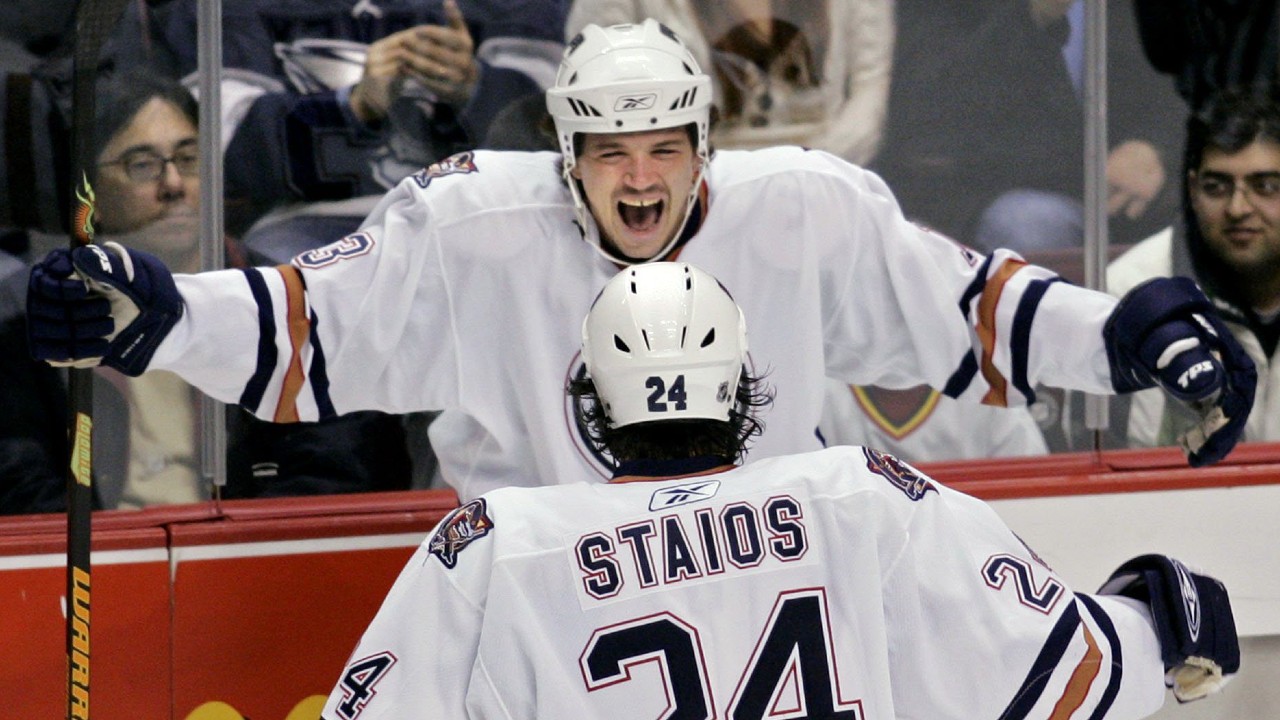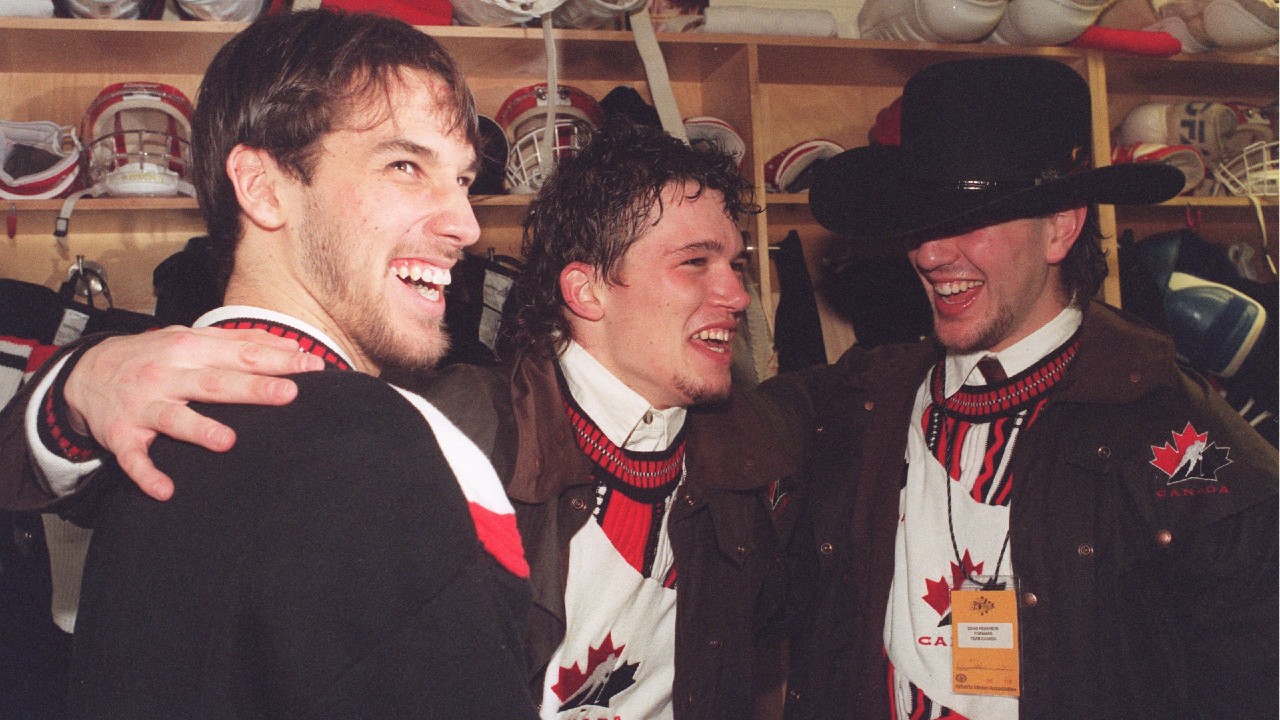It’s lunchtime on a Monday and Todd Harvey is at home in Cambridge, Ont., streaming a Swedish junior game featuring Frolunda, whose roster includes a couple of the best 2003-born prospects in hockey: Fabian Lysell and Simon Edvinsson.
It is not quite three weeks since the 2020 NHL Entry Draft and, possibly, as much as a year until the next one, but Harvey is already getting ready to run the 2021 talent lottery for the Vancouver Canucks.
“I think I took about five days off there after the draft,” Harvey, 45, says with a laugh when asked about the off-season for amateur scouts. “But other leagues are playing right now; you’ve got to get going. We’ve had some Zoom calls and are getting ourselves prepared as best we can.
“It’s a lot of games. But it’s something I’ve been doing my whole life and this gives me the opportunity to stay in the game and be part of trying to win a championship. That’s the biggest thing. As a player, you want to hoist that trophy. I got close. Now, in a different capacity, I still want to hoist that thing.”
Harvey’s new capacity is as the Canucks’ director of amateur scouting.
There are many “interim” labels in 2020, and we all hope that applies to the coronavirus itself.
For now, Harvey is unofficially the Canucks’ interim director of amateur scouting. But eventually the former NHL player will have the prestige and comfort of his job’s full title and salary.
As rancorous and wonderfully distracting as the team’s public divorce was in May from former scouting director Judd Brackett, who wanted more autonomy and is now getting it from the Minnesota Wild, Harvey’s transition to the top role has been quiet and apparently seamless.
After abandoning a brief foray into coaching to join Vancouver’s scouting staff just three years ago, Harvey ran the Canucks’ draft earlier this month when the team did not select until the third round but claimed some intriguing, highly-skilled prospects in later rounds who may eventually outplay their draft position.
Harvey says he was nervous awaiting the Canucks’ first selection, hoping Finnish defenceman Joni Jurmo would still be available at No. 82, and was happy with the team’s five picks.
Barring further trades by general manager Jim Benning, Harvey will have a full allotment of seven picks in 2021.
Harvey had two promotions in less than a year with the Canucks. Hired by Benning in 2017 on the recommendation of Scott Walker, who was working in Vancouver’s player-development department and had known Harvey most of his life, Harvey spent his first two years scouting Ontario before he was bumped up to a “crossover” role before last season.
Benning, who built his management career as a scout, clearly likes what he sees in Harvey.
“He started working as a regional scout working in the OHL, and then we made him a crossover scout,” Benning says. “He was kind of Judd’s right-hand man, and when we moved on from Judd, he’s been overseeing the department. He’s been really good in that role.
“He communicates with all of our scouts, keeps them up to speed with what’s going on. And he has good communication with us in upper management and lets us know what’s going on. He’s passionate about the game and young players and trying to figure out what they’re going to be in the NHL. He’s got a good eye. He has experience playing in the league and knows ... the players that you win with because he’s been there in the battles.”
In his final NHL season, Harvey lost Game 7 of the 2006 Stanley Cup Final with the Edmonton Oilers.
 Harvey celebrates with Oilers teammate Steve Staios after scoring against the Canucks during a 2005 NHL game. (Richard Lam/CP)
Harvey celebrates with Oilers teammate Steve Staios after scoring against the Canucks during a 2005 NHL game. (Richard Lam/CP)
What Benning may see in Harvey is a lot of himself. Although they are a hockey generation apart, Benning and Harvey share a fascinating parallel.
Benning, 57, was the sixth-overall draft pick by the Toronto Maple Leafs in 1981. In his draft year, Benning had a 139-point season – as a defenceman – with the Portland Winterhawks. But in the NHL, Benning never came close to fulfilling projections as a puck-rushing, offensive dynamo.
Instead, he had to adapt, learn to play a 200-foot game and stay valuable enough to log 610 games with the Leafs and Canucks.
Harvey was the ninth-overall pick in 1993, courtesy of the Dallas Stars, and scored 50 goals and 100 points in his draft season with the Detroit Junior Red Wings. Projected to become a high-scoring power forward who could dominate the front of the net, Harvey never scored more than 11 goals in an NHL season but logged 671 games over 12 years by adapting to a checking role and providing energy and combativeness.
“When I went to Dallas, they put me on the first line,” Harvey says. “I scored 11 goals in 40 games (as a rookie). But the year after that, they signed some guys and got a little older and I got bumped down. I got put on a line with Guy Carbonneau and Dave Reid – a third-line role and I was more of a checker.
“What really helped me stay in the league was those two guys teaching me the defensive side of the game. I transitioned away from being a top-six guy. And when you’re in the bottom six, you’ve got to do the little things that help your team win the hockey game. I had to figure that out quick. It’s a tough league, and you better be able to adapt.”
Which brings us to this: If as a player you were forced to focus on nuance and tradecraft -- the “little things” -- to stay in the NHL, isn’t that going to frame your scouting outlook when watching for details less obvious than how quickly a prospect skates or releases a shot?
“I’ve never really thought about it like that,” Benning says. “I do think what happens, though, is if you’re just an average NHL player, you’re always thinking about ... the details of the game because if you want ice time, you can’t make mistakes. That’s the way your mind works. You prepare for practice, you show up every day and work hard because you’re trying to figure out a way to stay in the league.”
Harvey says: “We can all see the good things that guys do. We can all see the guys who can skate and do great things. But it’s the stuff, the little things in games, that help your team win. Those little things ... I do look for that.”
A decade before Canada’s “Dream Team” at the world junior championship featured Sidney Crosby, Shea Weber, Patrice Bergeron, Ryan Getzlaf and other future stars, the 1994 NHL lockout created the original Dream Team that Todd Harvey was good enough to captain as a 19-year-old.
His teammates in Red Deer, Alta., included Ryan Smyth, Ed Jovanovski, Wade Redden and Darcy Tucker. But the offensive leader of that formidable, gold-medal team, Marty Murray, scored only 31 goals in the NHL. Jason Botterill scored only five, while Larry Courville played just 33 NHL games and defencemen Chad Allan and Lee Sorochan combined for only three. “Just because you’re a great junior player doesn’t mean you’re going to be a great NHL player,” Harvey says. “We’re looking for guys who are going to be great NHL players. But it’s a tough league to make. And when you get there, it’s even tougher to stay.”
 Team Canada trio Jamie Storr, Todd Harvey and Dan Cloutier celebrate in the dressing room in Red Deer, Alta., after Canada clinched the gold medal at the 1995 World Junior Junior Ice Hockey Championships. (Ray Giguere/CP)[/caption]
Team Canada trio Jamie Storr, Todd Harvey and Dan Cloutier celebrate in the dressing room in Red Deer, Alta., after Canada clinched the gold medal at the 1995 World Junior Junior Ice Hockey Championships. (Ray Giguere/CP)[/caption]

